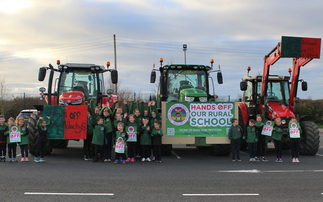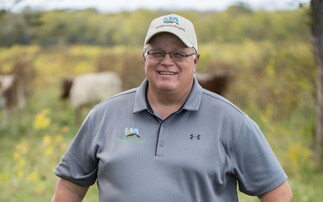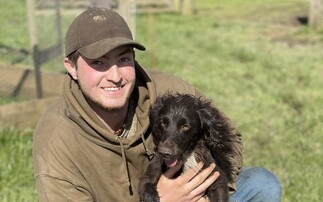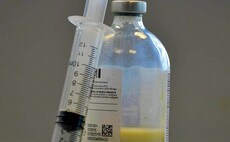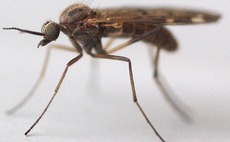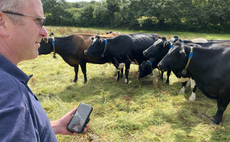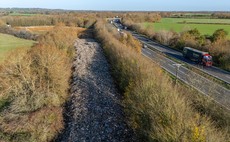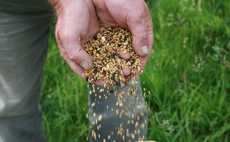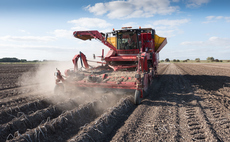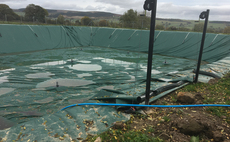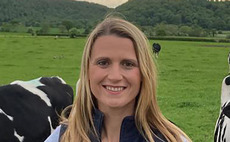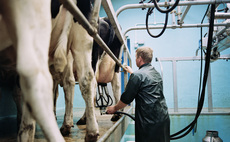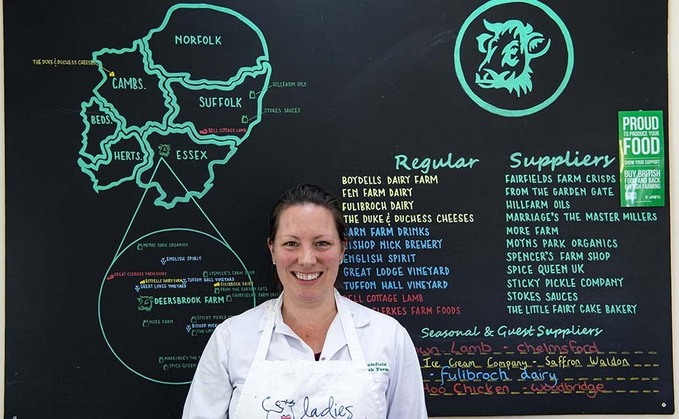
Pasture-fed livestock are promoted as good for the environment, but it's the human health gain that is the prime driver for Anna Blumfield who returned to the family farm eight years ago. Jack Watkins reports.
Despite coming from a family which has farmed in East Anglia area for at least four generations, time spent outside the industry gave Anna Blumfield a clear vision.
She is now passionate about promoting the nutritional benefits of cattle fed on a strictly grain-free diet for their entire lives and has introduced a native suckler herd to Deersbrook Farm, Braintree, Essex.
Anna says: "I was five when my dad, Peter Hawes, moved the family here and started building up a commercial beef herd, having previously been farming at Stowmarket, Suffolk.
"I got my first Gloucestershire Old Spot pig at the age of eight, and I was in love with farming from the start.
"But I'd always been discouraged from going into it so I did a degree in sports therapy which covered nutrition and sports injury rehabilitation.
"It was this that gave me an interest and understanding of what goes into our bodies and how it affects our health, as well as the benefits of grass-fed beef."
With the theory in place, the opportunity to put learning into practice arose eight years ago for Anna.
"My husband Phil and I were sat having dinner with my mum, Mary, and my dad. They joked about living by the sea and swapping houses with us, because we lived at Shotley, on the Ipswich peninsula," she says.
"They were planning on retiring and selling up. The herd was down to 30 cows.
"Within a month, Phil and I had moved on to the farm, and started to build the herd back up again."
Peter and Mary never did make their move to the sea though.
Instead, they both remain involved with the business, Peter as ‘a fountain of knowledge' on the breeding and sourcing of stock and Mary with her administrative skills and help with looking after Phil and Anna's four children, Oliver, 12, Amber, 10, Benjamin, two, and Hudson, one.
Meanwhile Phil, who Anna first met when he came to work on a harvest at the farm, took over management of the herd and the day-to-day running of the farm.
Alongside rebuilding the commercial herd to give the business a degree of continuity and financial stability, Anna was able to embark on her plan to found a new herd of native bred cattle which were to be certified as grass fed with the Pasture-Fed Livestock Association.
"There is no grain in their entire life, not at the start, not at the finish. And I stress the finish"
Anna Blumfield
Registered herds are audited every year to prove they meet the required standard and Anna says the bar is high.
"Pasture- fed for life literally means calves are on their mother's milk until weaning, and then they are put on
pure pasture," she says.
"There is no grain in their entire life, not at the start, not at the finish. And I stress the finish.
"If you feed cattle on grass for 40 per cent of their life you can say they are grass fed, even if for their last three months you finish them off grain.
"Yet in that last three months, you begin to reverse all the nutritional benefits of the earlier
pasture feeding. What the cattle graze on converts into protein for us to eat.
"We have our beef nutritionally analysed to prove the omegas, essential fatty acids and vitamin B12 are at elevated levels compared to grain-fed beef.
"The omegas and B12s are not things our bodies generate naturally, so to find a source of that is fantastic."
Silage and hay is also made on the farm.
"We completely manage the herd's diet," Anna says.
"We harvest from the herbal leys we have sown, so that even when our cattle are in the yard, they are getting food full of clovers and other vegetation.
"We make about 4,000 bales of hay and silage per year, and Phil also bales 5,000 straw bales from our neighbours for winter bedding."
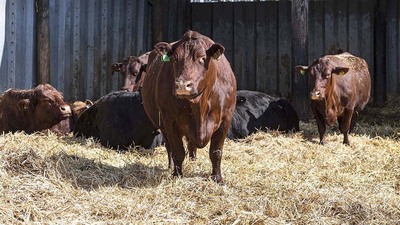
Self-sufficient
To operate such system, a breed of cattle which is self-sufficient is needed.
The breed of choice at Deersbrook is the Sussex, a few of which were already present in the commercial herd, while numbers were built by sourcing from pedigree Sussex herds in south east England.
Deersbrook now has four bulls and operates as a closed herd of 150 breeding cows, with the aim to get numbers up to 200.
"The Sussex stood out as particularly docile animals which really thrive on pure pasture," Anna says.
"They are natural mothers who birth well and will do so outside. They outwinter well and are long-lived.
"We have got some cows who are still producing calves at the age of 14 or 15. Sussex also produce a wonderful carcase and superbly marbled, fine grained meat."
The development of the herd has not been without setbacks though.
"We had a TB scare six years ago when we lost 38 animals over two years, even though in the end it turned out we hadn't had TB at all," says Anna.
"We lost our prize Sussex bull, the first one I had bought. He did not have TB but had to be destroyed because he might have had it.
"We are in the process of selling off the commercial herd this year to concentrate fully on the natives and direct selling."
The farm also has 120 rare breed pigs, comprised of Gloucestershire Old Spots and Oxford Sandy
and Blacks.
Anna built up a custom for the farms meat initially by farm gate selling and attending farmer's markets and food festivals.
The farm invested in its own butchery and shop two and a half years ago and also does meat boxes for national delivery.
"Our abattoir, Humphreys, at Great Leighs, is a 20 minute slow trundle down the road," she says.
"They are a small family business we just couldn't do without. After slaughtering, a local butcher used to cut and pack the meat to my specifications. But building our own butchery has given us complete control.
"We are able to age the carcase in our dry chiller for 28 days and our butcher, Aaron Martin, can cut them to customer specifications.
"We cut differently to a supermarket or high street butcher, and make full use of the carcase, from nose to tail."
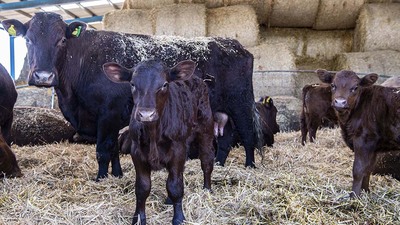
Anna and Phil have built the herd up from 20 cows after taking over the family farm eight years ago.
Cherry Adams manages the farm shop.
"She's happy on the phone talking to customers about our range of meats, along with the produce we stock from other East Anglia farms," Anna says.
Along with building a direct sales business and their young family, Anna is also an active member of Ladies in Beef.
"The group was set up 11 years ago to recognise the growing numbers of female farmers in the sector, but our main aim is to champion British beef," she says.
"We're also very involved with Great British Beef Week (GBBW).
"This time last year I was heavily pregnant with Hudson and it was a week before the first lockdown, but we borrowed a neighbour's thatched barn, hired a chef, Alan Paton, and organised a massive feast for guests.
"This year we are planning an eat-at-home videocast which people can log into and hear chef Geoff Douglas taking them through the beef-eating experience, with prepared dishes especially for GBBW."
In the future, Anna hopes to convert one of the farm barns into a cafe.
"We already do pop-up eating events in the meadows in summer, and people make 90-minute journeys to visit the shop," she says.
We're so out of the way, everyone has to make a special journey to come here, but there's definitely more scope."
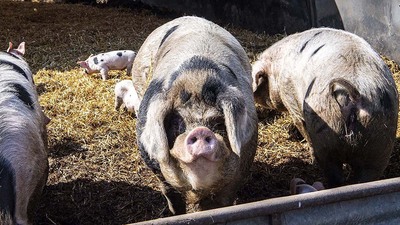
Deersbrook farm also has 120 rare breed pigs.
Farm facts
- 42-hectare (105-acre) family farm, with a further 275ha
(680 acres) of rented permanent pasture - Beyond family members, staffing is one full-time and two seasonal workers. Deerbrook employs a full time butcher and shop assistant, plus a part-time chef and Saturday workers
- Sussex herd 150 of 150 breeding cows plus followers
- Beef stock finished at between 28-30 months. Average weight on hook 325kg
- Farm also has varying acreages and yields of fodder beet, turnips and winter barley









